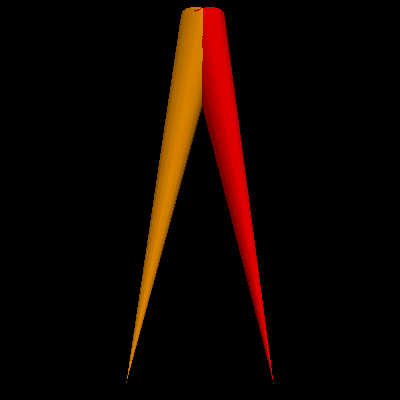
Background
Bones and floors are hard. Joints are quite flexible until they hit rigid limits. In studying human locomotion, one often makes the approximation that the motion of ones limbs is energy conserving except for abrupt impacts (foot hits the ground, knee joint goes straight) at which point energy is dissipated but momentum and angular momentum are conserved. Most of these models tend to be simple to describe, but rather complex to write down or program. Here we implement a remarkably simple model of walking, which exhibits period doubling and chaos. We will learn- Nice animation techniques
- How to terminate the solution of a differential equation not at a specific time, but at a collision condition
- How small an effect chaotic motion can be.
Procedure
Reading
You will be investigating a model of locomotion described in an article by Ruina et al.. Download this paper and read through it briefly. You will find that the concepts will be clearer if you have already completed the double pendulum module.
Download at read the pdf description of the activity, Walker Exercise. The description can in part be confusing -- do not hesitate to ask for assistance.
Setup
- Create a new directory
- Download the following files:
- Walker definition hints -- rename as "Walker.py".
- Walker graphics file .
- Pendulum Period hints -- rename as PendulumPeriod.py.
- Walker definition hints -- rename as Walker.py.
- Phase plot hints -- rename as WalkerPhasePlot.py
- Unstable orbit hints -- rename as WalkerUnstableOrbit.py
- If you want a 3D version of the graphics you can download Walker animation using visual or Walker animation using Enthought. If you use the Enthought version, rename it as WalkerGraphics.py. You do not need these "WalkerAnimate" files to do the module -- they are mostly for fun.
- Open the ".py" files in a text editor. Start a ipython session.